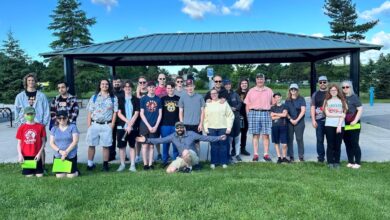Study highlights collaborative design for accessible robots

Study highlights collaborative design for accessible robots
by Clarence Oxford
Los Angeles CA (SPX) Jun 05, 2024
Researchers at Carnegie Mellon University have found that collaboration between roboticists and people with disabilities can yield innovative robot designs that enhance accessibility and inspire new applications.
School of Computer Science faculty members Sarah Fox and Nikolas Martelaro identified potential challenges for sidewalk robots and proposed solutions in their study. The research, led by HCII Ph.D. student Howard Han, was presented at CHI 2024.
Sidewalk delivery robots have become more common, especially during the pandemic. However, their presence on sidewalks often conflicts with pedestrians, particularly those with mobility disabilities. For instance, a delivery robot at the University of Pittsburgh blocked a wheelchair user from a ramp in 2019.
Fox and Martelaro’s study involved discussions with roboticists and people with mobility disabilities to identify major accessibility issues and suggest improvements.
Startups that develop sidewalk robots often overlook accessibility due to rapid development cycles. “There’s not really the time or incentive to slow down in the ways needed to get that type of input from a variety of stakeholders, including people with disabilities,” Fox said.
Roboticists acknowledged the lack of accessibility considerations and expressed a desire for industry standards similar to the Web Content Accessibility Guidelines. Such standards could improve the design of various public robots.
Fox emphasized the potential of public service robots: “Through this collaborative design opportunity, they conceptualized a number of other ideas for robots that operate on the sidewalk and in public that aren’t just for delivery.”
Examples include robots that clear sidewalks of debris or snow, act as crossing guards, carry supplies, or help with shopping. These robots could also report traffic issues or blocked paths and alert users via mobile apps.
The study builds on previous research that highlighted the limitations of sidewalk robots. Challenges arise in real-world settings, such as broken sidewalks and unexpected obstacles, which often require human assistance.
Robots also struggle to meet the needs of users with mobility disabilities, as they cannot navigate stairs or elevators. “Accessibility is essentially a known problem,” Fox said. “Roboticists understand that consideration for accessibility often comes too late in the design process.”
Involving different stakeholders in the design process led to discussions about the appearance and capabilities of robots. For instance, a grocery-fetching robot that could reach high shelves was considered, but some roboticists felt it could appear “creepy or foreboding.”
Fox and Martelaro aim to test these designs in cost-effective but extensive ways, with a focus on engaging relevant stakeholders more deeply.
Research Report:Co-designing Accessible Public Robots: Insights from People with Mobility Disabilities, Robotic Practitioners, and Their Collaborations
Related Links
Human-Computer Interaction Institute
All about the robots on Earth and beyond!



